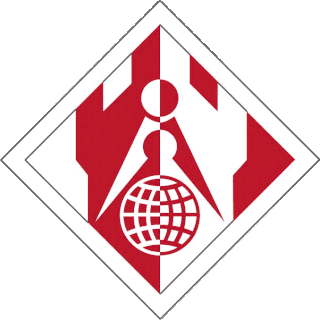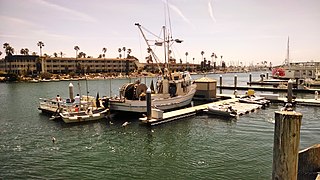
The United States Army Corps of Engineers (USACE) is an engineer formation of the United States Army that has three primary mission areas: engineer regiment, military construction, and civil works. The day-to-day activities of the three mission areas are administered by a lieutenant general known as the commanding general/chief of engineers. The chief of engineers commands the engineer regiment, composed of combat engineer army units, and answers directly to the chief of staff of the army. Combat engineers come from throughout the service and can be active duty, national guard, or army reserve. Combat engineers' duties are to construct fighting positions, fixed/floating bridges, and obstacles and defensive positions, place and detonate explosives (sappers), conduct operations that include route clearance of obstacles and rivers, prepare and install firing systems for demolition and explosives, and detect mines. For the military construction mission the commanding general is directed and supervised by the Assistant Secretary of the Army for installations, environment, and energy, whom the President appoints and the Senate confirms. Military construction relates to construction on military bases and worldwide installations.
The United States Army Foreign Science and Technology Center (FSTC) was an intelligence production agency located, for much of its existence, in Charlottesville, Virginia. The organization and early history of FSTC is outlined in an official history. In the 1960s, FSTC was housed in the Munitions Building on Constitution Avenue in Washington, DC. FSTC produced scientific and technical intelligence concerning ground forces weapons, equipment, and technology of foreign armies. Most of the effort was on enemies and potential enemies of the United States. FSTC provided scientific and technical intelligence in support of military commanders, materiel developers, and of Department of the Army, Department of Defense, and National-level decision makers.
The United States Army Corps of Engineers is involved with a wide spectrum of public works projects: environmental protection, water supply, recreation, flood damage and reduction, beach nourishment, homeland security, military construction, and support to other Governmental agencies. Through 19 Flood Control Acts since 1917, Congress has authorized the Corps of Engineers to be involved with flood protection and damage reduction in almost every state of the union.
The Water Resource Development Act of 1974, is part of Pub.L. 93–251 enacted on March 7, 1974, enacted by Congress, which also included the Streambank Erosion Control Evaluation and Demonstration Act and the River Basin Monetary Authorization Act.
The Water Resources Development Act of 1986 is part of Pub.L. 99–662, a series of acts enacted by Congress of the United States on November 17, 1986.
The Water Resources Development Act of 1990, Pub.L. 101–640, was enacted by Congress of the United States on November 12, 1990. Most of the provisions of WRDA 1990 are administered by the United States Army Corps of Engineers.
The Water Resources Development Act of 1996 is part of Pub.L. 104–303 (text)(pdf), was enacted by Congress of the United States on October 12, 1996. Most of the provisions of WRDA 1996 are administered by the United States Army Corps of Engineers.
Rivers and Harbors Act may refer to one of many pieces of legislation and appropriations passed by the United States Congress since the first such legislation in 1824. At that time Congress appropriated $75,000 to improve navigation on the Ohio and Mississippi rivers by removing sandbars, snags, and other obstacles. Like when first passed, the legislation was to be administered by the United States Army Corps of Engineers (USACE), under its Chief Engineer and the Secretary of War.
Water Resources Development Act of 1988, Pub.L. 100–676, is a public law passed by Congress on November 17, 1988 concerning water resources in the United States in the areas of flood control, navigation, dredging, environment, recreation, water supply, beach nourishment and erosion.
The Water Resources Development Act of 1992, Pub.L. 102–580, was enacted by Congress of the United States on October 31, 1992. Most of the provisions of WRDA 1992 are administered by the United States Army Corps of Engineers.
The Water Resources Development Act of 1999, Pub.L. 106–53 (text)(pdf), was enacted by Congress of the United States on August 17, 1999. Most of the provisions of WRDA 1999 are administered by the United States Army Corps of Engineers.
The Water Resources Development Act of 2000, Pub.L. 106–541 (text)(pdf), was enacted by Congress of the United States on December 11, 2000. Most of the provisions of WRDA 2000 are administered by the United States Army Corps of Engineers.

Channel Islands Harbor is a small craft harbor and shore-protection project in Oxnard, California at the southern end of the Santa Barbara Channel. It is the fifth largest harbor for small-craft recreation in the state of California and is a waterfront resort, recreation, and dining marketplace. Recreational activities include diving, boat charters, sea kayaking, sportfishing, and whale watching.
Morrough "Mike" Parker O'Brien, Jr. was an American hydraulic engineering professor and is considered the founder of modern coastal engineering. In addition to his academic work, O'Brien served as a consultant on a variety of government and private sector projects including work for General Electric. O'Brien's government career culminated in a presidential appointment to the National Science Board.

The American Shore and Beach Preservation Association (ASBPA) is a private, nonprofit organization formed in 1926. It was founded to address coastal erosion and the loss of sand on America's beaches. Today, ASBPA is an association of beach and coastal practitioners, including beach towns and managers, coastal engineers, coastal geologists, dredging and ecological restoration companies, coastal academics and students. ASBPA advances coastal science and coastal engineering through its peer-reviewed journal, Shore & Beach, and an annual technical conference. It also hosts an annual coastal summit in Washington, DC to advocate for coastal policies.

Rear Admiral Raymond Stanton Patton was the second Director of the United States Coast and Geodetic Survey and a career officer in the United States Coast and Geodetic Survey Corps, predecessor of the National Oceanic and Atmospheric Administration Commissioned Officer Corps. He was the first Coast and Geodetic Survey Corps officer to reach flag rank.

Greco Island is a wetland island in Redwood City, California. Greco Island is part of the larger Don Edwards San Francisco Bay National Wildlife Refuge. Westpoint Slough follows the South side of the island while Redwood Creek is along the West. The San Francisco Bay bounds the North and East sides of the island.
The Board of Engineers for Rivers and Harbors (BERH) was a federal board organized under the US Government's War Department, U.S. Army. It was a part of the civil works program of the United States Army Corps of Engineers. The board was created by the Rivers and Harbors Bill of 1902. The Board consisted of a group of Army engineer officers with a resident large staff including many civilian employees.




